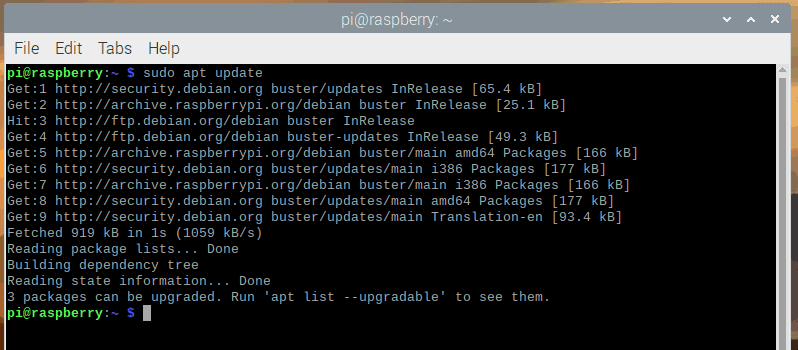


- #RASPBERRY PI SUDO APT GET UPDATE ALL HOW TO#
- #RASPBERRY PI SUDO APT GET UPDATE ALL INSTALL#
- #RASPBERRY PI SUDO APT GET UPDATE ALL MANUAL#
#RASPBERRY PI SUDO APT GET UPDATE ALL HOW TO#
Now you know how to update a Raspberry Pi, it’s probably a good idea to get comfortable using the Linux terminal, especially with some cool Linux terminal commands you can try on your Pi. Regular updates bring new software, bug fixes, advancements, and more. While Linux devices like the Raspberry Pi are generally considered to be more secure than their Windows counterparts, that doesn’t mean it isn’t essential to keep your Raspberry Pi updated. You should also open a terminal window and run sudo apt update & sudo apt full-upgrade to ensure that the latest software packages are installed for your fresh Raspbian installation. rpi-update is a command line application that will update your Raspberry Pi OS kernel and VideoCore firmware to the latest pre-release versions. If your Raspberry Pi is attached to your home router, check it has an IP assigned 3. If the process was successful, you’ll be able to proceed with the initial setup process and restore any backed up files to your new Raspbian installation. Then I tried to sudo apt-get update and sudo apt-get update -fix-missing, but it doesnt work either. You’ll be able to safely remove the microSD card, insert it back into your Raspberry Pi and power it up at this point. In the Imager window, click the Choose OS button and select Raspbian from the option window. Once the Raspberry Pi Imager tool is installed, remove your Raspberry Pi’s microSD card and connect it to your PC, then launch the Raspberry Pi Imager.This will automatically download the image file for the latest version of Raspbian and flash it to your microSD card directly.
#RASPBERRY PI SUDO APT GET UPDATE ALL INSTALL#
To do this, you’ll need to download and install the Raspberry Pi Imager tool for your operating system.Doing this will wipe your microSD card, so make sure any files you wish to keep are backed up to an external drive before you begin. I don't know much about apt-get and how it works so I cannot give more information. sudo apt-get update tells me that there are some problems with package files. This is also the method that the Raspberry Pi Foundation recommends over an in-place upgrade because it’s the cleanest, quickest, and best way to move from one major Raspbian release to the next. I cannot update my Raspberry PI (Raspberry PI 1 Model B with Raspbian Stretch) anymore. To perform a major update from an older Raspbian release, you should first back up your Raspberry Pi and flash the latest version of Raspbian to your Raspberry Pi’s microSD card (or SD card for older Pi models).
#RASPBERRY PI SUDO APT GET UPDATE ALL MANUAL#
Performing a manual update from one Raspbian version to the next is extremely problematic, especially given the changes to packages and features from one release to the next. While Raspbian can be updated to a major new release manually, there’s no automatic tool to do this. While the apt update process will update your software packages, it won’t update your system. How to Install a Major Raspbian Update on a Raspberry Pi You’ll need to reboot once your Raspberry Pi firmware has updated-type sudo reboot to do this if the rpi-update tool doesn’t do it automatically.


 0 kommentar(er)
0 kommentar(er)
